5 Exercises to Prevent Sore Hamstrings After Running Workouts
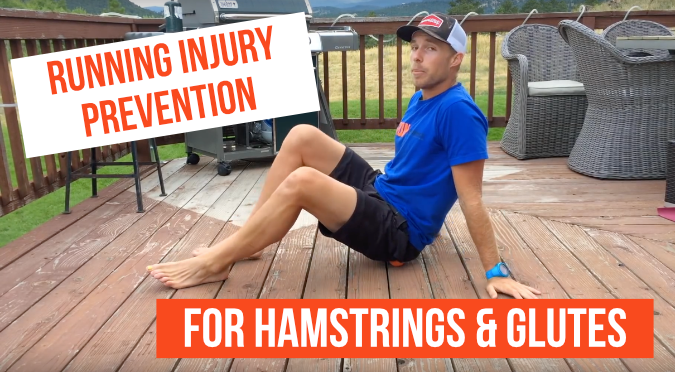
Sore hamstrings after a workout are the worst. Fortunately, hamstring pain from running doesn’t have to be an unavoidable byproduct—stretching and mobility work can help.
Raise your hand if you’ve ever gone out for a run without doing any prep work beforehand or any cool-down work afterward. Probably raising your hand, right?
No judgment here!
Tight hamstrings are an issue for many runners—you’re not alone. Sore hamstrings aren’t just something you have to live with, though.
Let us help you work through some great mobility and hamstring stretches for runners which, if included regularly in your running routine, will help prevent those sore hamstrings after running!
Why You Have Sore Hamstrings After Workouts
It’s a question we hear a lot: “Why are my hamstrings sore after running workouts?”
Believe it or not, those running injuries rarely come out of nowhere. Much like a car, repeated use combined with lack of maintenance leads to big problems.
If you’ve ever had to recover from an injury, you’d probably agree that a few minutes a day of giving some love to your muscles and joints pales in comparison to multiples weeks or months spent immobile on your couch.
In most cases, YOU are in control of what happens to YOUR body. Let’s look at what you can do before and after your workouts to not only keep those injuries at bay–but also to feel better between runs and keep soreness to a minimum.
Running injury prevention starts with regular maintenance of your flexibility and range of motion.
Today we’re focusing on the hamstrings and glutes, but realize that this kind of work can and should be done on other areas of your body as well. Hamstring soreness from running doesn’t just come out of nowhere—it’s built up over time.
Just as the hamstrings and glutes need attention to perform their best, every other part of the runner’s body needs the same kind of love! We’ll show you how to give your sore hamstrings the TLC they need.
5 Strategies to Prevent Hamstring Soreness After Workouts
1. Warm-Up Routine
A warm up is one of the best things you can do for your running, but it’s also one of the easiest things to skip! By getting in some dynamic movement before taking that first running step, you’re giving your body a chance to start increasing blood flow, putting your joints through some greater range of motion and easing into the movement patterns you’re about to demand of your body.
Mimicking the running motion in a warm up movement will get you much better prepared for your run than just walking out the door!
For today’s purpose, we’re talking about why a dynamic warm up is so good for your hips, glutes, and sore hamstrings–and how it can contribute to preventing sore hamstrings after running.
This particular movement helps to activate and relax the hamstrings without creating that uncomfortable tension or pull, often felt in a static stretch. You’ll also get some great range of motion in your hip flexors of the opposite leg.
Think of this move as a yin and yang movement. As you lunge forward, the front of the hip gets a good stretch, and as you move back, the hamstring is the focus. This is similar to how the leg works while actually running. Practice a stretch in the hamstring as you pull yourself forward in a stride and a stretch in the hip flexor as your leg extends behind you.
2. Hamstring Stretches for Runners
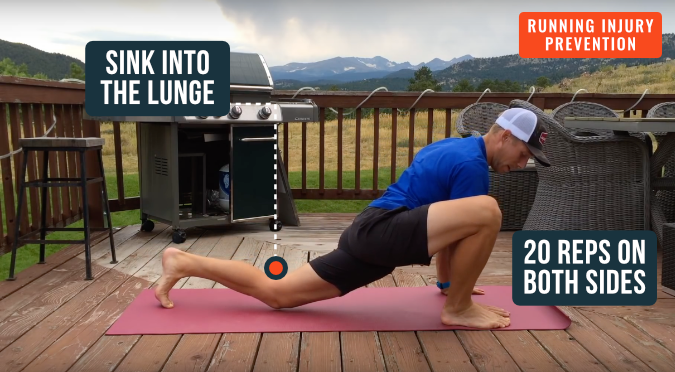
Typical hamstring stretches for runners usually involve long static holds. There’s a time and place for that, but we believe a mix of dynamic hamstring stretches can help strengthen your body and help with recovery of sore hamstrings.
1) Find a standard lunge position: Hands directly under shoulders, one foot set on the outside of your hand, toe facing straight ahead, knee directly over the ankle.
2) Relax and drop the hip of the extended leg as close to the ground as possible.
3) From here, you’re going bend and straighten the front (bent) leg.
4) The back leg will stay extended and relaxed.
5) Use your hands and front heel to drive into extension through the front hamstring, keeping the head and neck relaxed and facing the leg.
6) Complete 20 “bend & straightens” per side.
3. Cool Down Routine
While hamstring stretches for runners are important, it’s not the only piece of the puzzle.
The hamstrings and glutes are HUGE muscle areas, and together create most of your effort as you run.
In both areas, inflammation and pain can arise when the smaller muscle fibers and groups get tight and “stuck” together, making the individual fascia far less productive in producing strength.
In other words, if the smallest links in the chain aren’t being taken care of and aren’t operating efficiently, our body will find ways to compensate, using other weaker areas to perform, often leading to overuse, pull, and injury…in this case, usually in the low back.
By using a lacrosse ball to massage the area, you’re accomplishing a few different tasks to take care of all those links.
First, you’re promoting blood flow to the area. Anytime you apply pressure to a muscle and then remove that pressure, blood comes rushing in. This new blood brings oxygen and glucose to the muscle, both of which help promote recovery.
Second, you help create slack and fluidity in your fascia, which is the connective tissue located throughout your body. The fascia can get stuck here and there, creating that acute soreness and tightness that can develop after a run. Breaking up those spots allows your muscles to “slide and glide” properly, thus helping maintain normal function.
Lastly, it just feels good! You’ve put in all this effort on the run, and taking a few minutes to relax, slow your breathing, and massage your muscles is a great way to cap off your hard work.
4. Hamstring Smash Mobility Workout
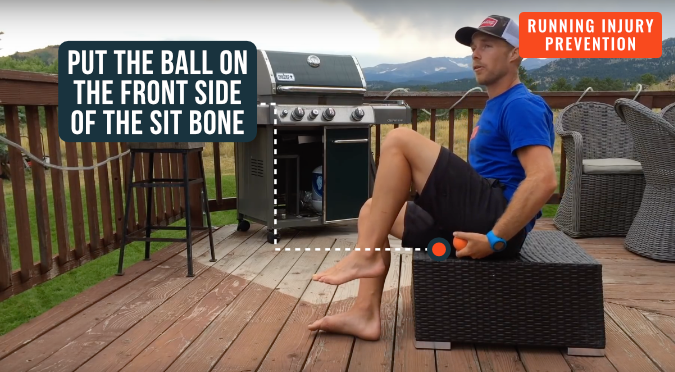
1) Grab a lacrosse ball, or something similar.
2) Find something to sit on (preferably something without a back) that will allow your feet and knees to hit the ground at a 90-degree bend.
3) Put the lacrosse ball under the highest part of one hamstring, just “below” the glutes.
4) Relax your weight onto the ball, leaving other foot planted firmly on the ground.
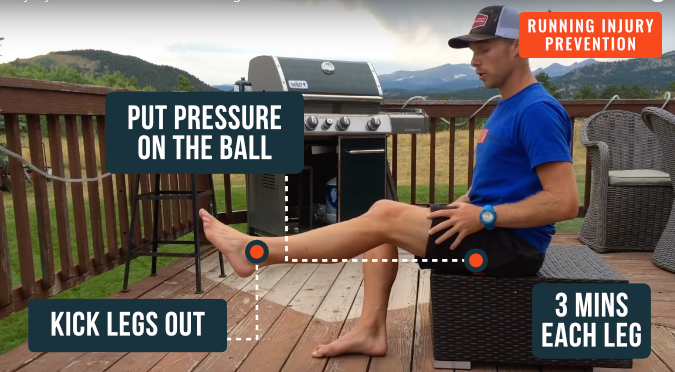
5) From here you’re simply going to bend and straighten the leg with the ball under it.
6) Note that the further into extension you get, the more intense (and painful) the stretch.
7) After a few reps, move the ball to a new spot on the hamstring.
8) Repeat in five to six areas, getting both lateral aspects of the hamstring, closer to the knee, etc.
9) Spend three minutes on each leg!
5. Glute Smash Mobility Work
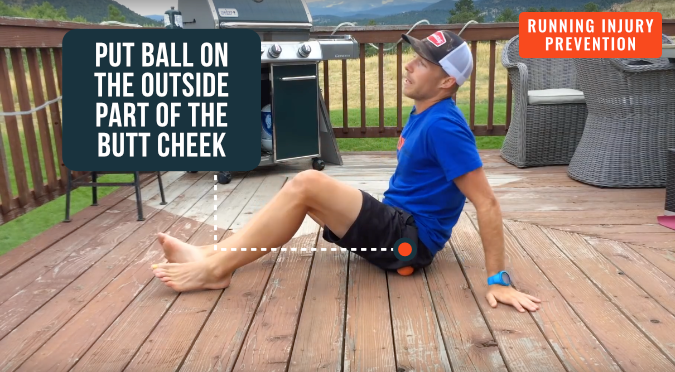
1) Again, you’ll need that lacrosse ball.
2) This time, you’ll be seated on the ground.
3) Put the ball under one side of your glutes, just behind your “sit bones”, where it’s a little meatier.
4) Support your body weight with both feet planted on the ground, using your arms to control pressure on the ball.
5) Start by making small circles in both directions, rolling over the ball.
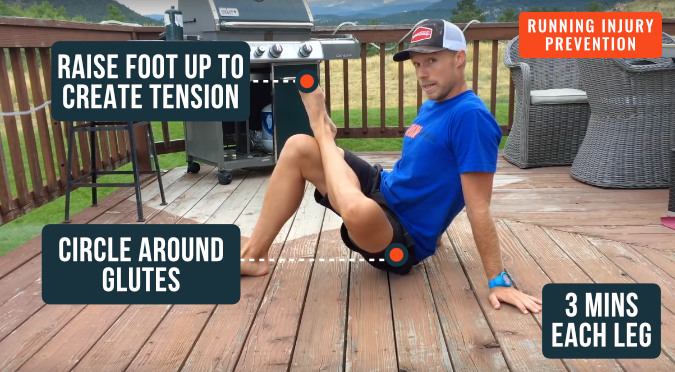
6) To increase the intensity, cross the leg (the one the ball is under) over top your other leg, creating a “figure 4” position.
7) Again, play with placement and circle direction of the ball.
8) Spend three minutes on each side!
Prevent Sore Hamstrings After Your Workout
You have 1,440 minutes in a day. If you can spend just 10 of those taking care of these important muscle groups, you’ll be able to hang onto better running form for longer periods of time, and of course…you’re much more likely to keep yourself away from injury, and your couch (unless you’re couch stretching).
Like we said before, even if you have a proper running training plan to follow, your training is essentially worthless without regular running injury prevention! Use these hamstring stretches for runners and mobility work to give your sore hamstrings the attention they deserve.
Hamstring pain and soreness don’t have to be a daily part of your running life. Follow the tips above to prevent sore hamstrings after your workouts.
For sticking with us to the end of this post, enjoy this FREE injury prevention video training! We give you our best running injury prevention techniques and exercises, guaranteed to keep you running happy and healthy for life! Download it here.
